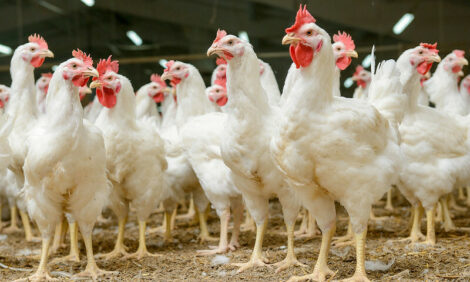



Livestock monitoring market to reach $1006.7 mln by 2028 - report
Europe is expected to be the most lucrative marketAccording to a report by Valuates Reports, the global Livestock Monitoring market size is estimated to be worth USD $562.1 million in 2022 and is forecast to be a re-adjusted size of USD $1006.7 million by 2028 with a CAGR of 10.2% during the review period. The adjustment was made due to the COVID-19 pandemic.
The livestock monitoring market is segmented by type - hardware, software and services, and by application, including milk harvesting, feeding management, breeding management, behaviour monitoring and control.
Major factors driving the growth of the Livestock Monitoring market include a growing focus on real-time monitoring and early disease detection, growing adoption of IoT and AI for livestock monitoring, the Covid-19 outbreak, rising demand for meat globally, and cost savings achieved through the adoption of livestock monitoring solutions.
Due to the rapid rise in global population, the number of dairies, poultry, and swine farms has increased significantly in recent years to meet the growing demand for meat and dairy products, said the press release. The ever-increasing number of dairy cattle needed to meet the global demand for dairy products is said to be the reason for the rising demand for livestock monitoring solutions. Similarly, increased meat consumption has also pushed growth. As the size of a dairy farm's herd grows, manually identifying and monitoring the herd becomes more difficult. As a result, the growing size of livestock farms provides opportunities for the livestock monitoring market to expand.
Farmers can detect diseases in animals at an early stage and take appropriate action by using livestock monitoring, a factor that is expected to fuel the livestock monitoring market growth. The cost of livestock monitoring can be reduced by using advanced sensing technologies. These technologies not only assist farmers in collecting real-time data on animal health and behaviour, such as feeding habits, food, and water quality, biosecurity, and hygiene levels, but also in accurately identifying and tracking the animals.
The recent Covid-19 outbreak is expected to have a positive impact on the livestock monitoring market. The highly contagious coronavirus is having an economic impact and implications across a wide range of industries, including animal health. Veterinary visits have been suspended or delayed due to the nationwide lockdown and social distancing, which is expected to increase the demand for livestock monitoring.
Based on type, the software segment is expected to be the most lucrative. The software segment consists of a bundled collection of multiple applications for livestock monitoring. The user interfaces, functions, and features of these applications are all related. Software is being used by a number of companies to make livestock data collection easier.
Based on application, the milk harvesting segment is expected to be the most lucrative. Manual milking is time-consuming and slow on a dairy farm. IoT addresses this issue effectively lowering costs and reducing the need for manpower.
Based on region, Europe is expected to be the most lucrative segment.









